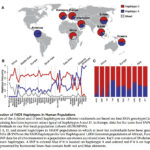
Encephalization, Fatty-Acid Metabolism and Modern Human Origins
American Journal of Human Genetics 90 (2012), 809–20. doi: 10.1016/j.ajhg.2012.03.014 Genetic Adaptation of Fatty-Acid Metabolism: A Human-Specific Haplotype Increasing the Biosynthesis of Long-Chain Omega-3 and Omega-6 Fatty Acids Ameur, Adam, Stefan Enroth, Asa Johansson, Ghazal Zaboli, Wilmar Igl, Anna C.V. Johansson,…
Human Kinship Systems and Human Origins: A Powwow Highway from AAA to AAPA Meetings
I recently returned from the American Anthropological Association Meetings in Washington DC where I presented a paper on kinship, enjoyed the company of other members of the interdisciplinary “Kinship Circle” group led by Dwight Read and Fadwa El-Guindi, socialized with my…
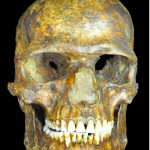
Ancient Kostenki 14 (Markina Gora) DNA: A Glimpse into a Population on Its Way from America to Africa
Science DOI: 10.1126/science.aaa0114 Genomic Structure in Europeans Dating Back at Least 36,200 Years Andaine Seguin-Orlando, Thorfinn S. Korneliussen, Martin Sikora, Anna-Sapfo Malaspinas, Andrea Manica, Ida Moltke, Anders Albrechtsen, Amy Ko, Ashot Margaryan, Vyacheslav Moiseyev, Ted Goebel, Michael Westaway, David Lambert,…
The End of Out-of-Africa: A Copernican Reassessment of the Patterns of Genetic Variation in the Old World
Over at Anthrogenica, I’ve been having some heated (as always) but this time also productive discussions regarding the interpretation of currently available genetic evidence. In the following I will sketch out a hypothesis that increasingly makes sense to me. 1….

Out-of-America at the Paleoamerican Odyssey Conference (October 17-19, 2013)
An email from Michael Waters, Director at the Center for the Study of the First Americans at Texas A&M University, confirms that I’m going to be presenting at the upcoming Paleoamerican Odyssey Conference in Santa Fe, New Mexico. These days, I rarely…

An Out-of-America Signal as Seen Through Human Regulatory Genes
PLoS Genet 9(4): e1003404. doi:10.1371/journal.pgen.1003404 Balancing Selection on a Regulatory Region Exhibiting Ancient Variation That Predates Human–Neandertal Divergence Omer Gokcumen, Qihui Zhu, Lubbertus C. F. Mulder, Rebecca C. Iskow, Christian Austermann, Christopher D. Scharer, Towfique Raj, Jeremy M. Boss, Shamil…
Out-of-America Theory and the Race Debate
The topic outlined in the title of this post is huge and I can’t give justice to it at this moment. But considering how dramatic of a revision of modern human evolutionary history the out-of-America theory is offering, it is…
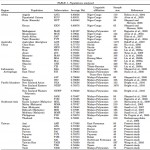
Is Taiwan to Austronesians what America is to Modern Humans?
American Journal of Physical Anthropology 150 (4): 551–564, April 2013 Ascertaining the Role of Taiwan as a Source for the Austronesian Expansion Sheyla Mirabal, Alicia M. Cadenas, Ralph Garcia-Bertrand, and Rene J. Herrera. Taiwanese aborigines have been deemed the ancestors…
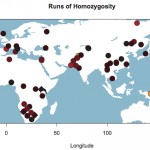
Clicks and Genes: Linguistic and Genetic Perspectives on Khoisan Prehistory
Science DOI: 10.1126/science.1227721 Genomic Variation in Seven Khoe-San Groups Reveals Adaptation and Complex African History Carina M. Schlebusch, Pontus Skoglund, Per Sjödin, Lucie M. Gattepaille, Dena Hernandez, Flora Jay, Sen Li, Michael De Jongh, Andrew Singleton, Michael G. B. Blum,…
Typological Linguistics and Population Genetics: A Synthesis or a Controversy
Trends in Cognitive Sciences Vol 16, Issue 3, March 2012, Pages 167–173 http://dx.doi.org/10.1016/j.tics.2012.01.007 Tools from Evolutionary Biology Shed New Light on the Diversification of Languages Stephen C. Levinson, and Russell D. Gray Computational methods have revolutionized evolutionary biology. In this paper…
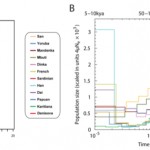
A High Coverage of the Denisovan Hominin
Science 30 August 2012 DOI: 10.1126/science.1224344 A High-Coverage Genome Sequence from an Archaic Denisovan Individual Matthias Meyer, Martin Kircher, Marie-Theres Gansauge, Heng Li, Fernando Racimo, Swapan Mallick, Joshua G. Schraiber, Flora Jay, Kay Prüfer, Cesare de Filippo, Peter H. Sudmant,…

Nivkh and Chukotko-Kamchatkan Linguistic Relationship and Its Genetic Correlates
Lingua Vol. 8, Issue 121, June 2011, 1359-1376 http://dx.doi.org/10.1016/j.lingua.2011.03.001 The Relationship of Nivkh to Chukotko-Kamchatkan Revisited Michael Fortescue With the availability today of reliable materials for comparing the languages that in the past have been lumped together under the rubric…
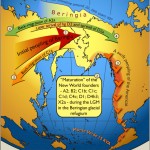
Dene-Yeniseian Language Family: Evidence for a Back-Migration to the Old World?
The 2012 Dene-Yeniseian Workshop took place on March 24 at the University of Alaska Fairbanks. Since the seminal presentation by the West Washington University linguist, Edward Vajda, of morphological and lexical evidence relating the small Yeniseian language family from Western…
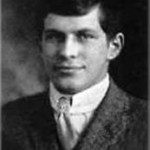
Out-of-America Antecedents. I. William James Sidis
Out-of-America is a largely unique theory. But even the most unusual theory of all has antecedents. Steve Sailer asks “Didn’t William James Sidis have some kind of Out-of-America theory 90 years ago?” I hereby announce a new theme on this…
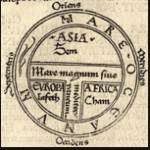
The World Without the West: Out-of-America Theory and Eurocentric Cosmologies
A revolution of the magnitude promised by the out-of-America theory of human origins requires a historiographic analysis. We need to understand how come science erred to the degree it did by focusing so exclusively and parochially on Old World centers…
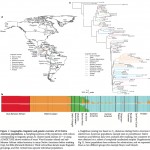
A Three-Wave Model for the Peopling of the Americas, or a Three-Wave Back-Migration from the Americas to the Old World
Nature (2012) doi:10.1038/nature11258 Reconstructing Native American population history Reich, David, et al. The peopling of the Americas has been the subject of extensive genetic, archaeological and linguistic research; however, central questions remain unresolved. One contentious issue is whether the settlement occurred…
The Pontic Steppe vs. the Bactrian Homeland of the Indo-Europeans
Dienekes, the confused blogger from my previous post, continues to be confused and confusing. In the comments section of Razib’s Discover Blog, he concedes: “As of late, I am rather more willing to give even Johanna Nichols’ 1997 model of…
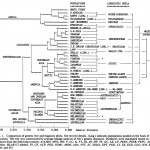
Phonemic Diversity and out-of-Africa Again: The Myth is Gaining a Momentum
PLoS ONE 7(4): e35289. doi:10.1371/journal.pone.0035289 Dating the Origin of Language Using Phonemic Diversity Perreault, Charles, and Sarah Mathew. Abstract Language is a key adaptation of our species, yet we do not know when it evolved. Here, we use data on…
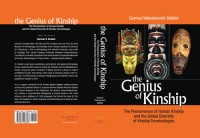

Recent Comments